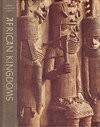Basil Davidson (1914–2010)
Auteur de Les royaumes africains
A propos de l'auteur
Crédit image: Basil Davidson [credit: Augusta Conchiglia]
Œuvres de Basil Davidson
A history of West Africa to the nineteenth century. With F. K. Buah and the advice of J. F. Ade Ajayi (1965) 106 exemplaires
Golden Horn 3 exemplaires
Discovering our African heritage 3 exemplaires
L'Angola au Coeur des Tempêtes 2 exemplaires
Peřeje 2 exemplaires
Czarna matka 2 exemplaires
Revelando a velha África 2 exemplaires
West Africa BEFORE THE COLONIAL ERA 1 exemplaire
Mãe Negra África: Os Anos de Provação 1 exemplaire
Os Camponeses Africanos e a Revolução Livro 1 1 exemplaire
L'Afrique ancienne - I (113) 1 exemplaire
Der Strudel Roman 1 exemplaire
L'Afrique ancienne i 1 exemplaire
L'Afrique ancienne - II (114) 1 exemplaire
Guida all storia africana 1 exemplaire
L'Afrique ancienne II 1 exemplaire
Africa: A Voyage of Discovery with Basil Davidson VHS Part V "The Bible and the Gun" Part VI "This Magnificanet Afric 1 exemplaire
The Ancient World and Africa 1 exemplaire
Fortunate Isles: a Study In African Transformation 1 exemplaire
The new West Africa : problems of independence 1 exemplaire
Partisan Picture 1 exemplaire
Der Strudel: Roman 1 exemplaire
Afrikas Historie - svensk oversættelse 1 exemplaire
Oeuvres associées
Unity and Struggle: Speeches and Writings of Amilcar Cabral (1979) — Introduction, quelques éditions — 61 exemplaires
Étiqueté
Partage des connaissances
- Nom légal
- Davidson, Basil Risbridger
- Autres noms
- Risbridger, Basil (birth name)
- Date de naissance
- 1914-11-09
- Date de décès
- 2010-07-09
- Sexe
- male
- Nationalité
- UK
- Lieu de naissance
- Bristol, Gloucestershire, England, UK
- Lieux de résidence
- Somerset, England, UK
Bosnia
Belgrade, Yugoslavia
Budapest, Hungary
Cairo, Egypt - Études
- Kelly College, Tavistock, Devon, UK
- Professions
- reporter
historian
Africanist - Relations
- Davidson, Keir (offspring)
- Organisations
- Special Operations Executive (WWII)
School of Oriental and African Studies
Secret Intelligence Service
The Economist
New Statesman
Union of Democratic Control (tout afficher 9)
Anti-Apartheid Movement
Daily Herald
Daily Mirror - Prix et distinctions
- Anisfield-Wolf Award (1960)
Medalha Amilcar Cabral (1976)
Military Cross
Membres
Critiques
Listes
Prix et récompenses
Vous aimerez peut-être aussi
Auteurs associés
Statistiques
- Œuvres
- 78
- Aussi par
- 4
- Membres
- 2,558
- Popularité
- #10,038
- Évaluation
- 3.7
- Critiques
- 18
- ISBN
- 149
- Langues
- 11
- Favoris
- 4

















